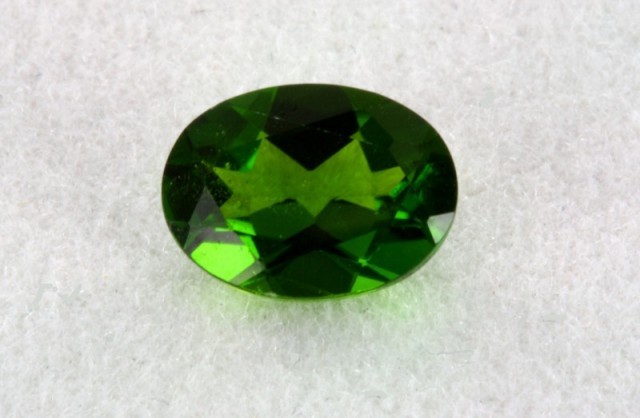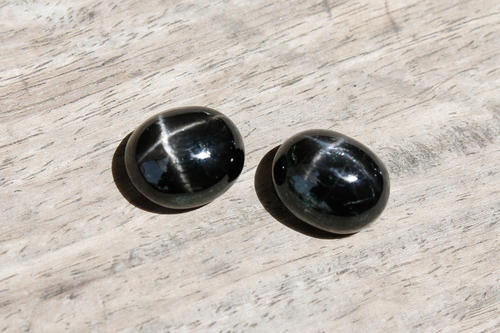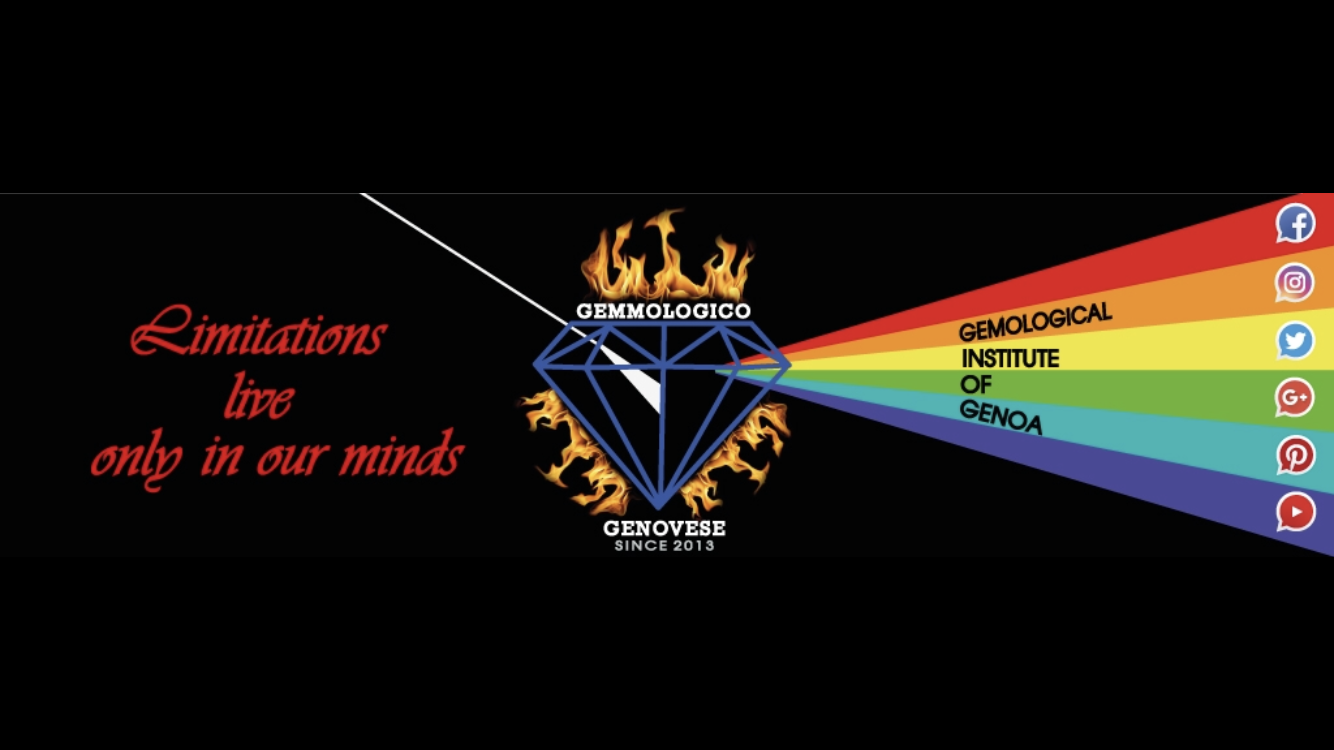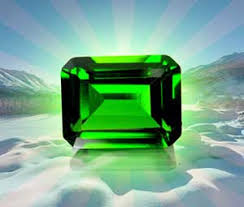
Chrome Diopside
Diopside
The Diopside is a Gem that often tests gemologists and gem dealers, who often confuse it for Tourmaline, Chrome Tourmaline, Tsavorite, Peridot, Zircon or for Sapphire Fantasy. But the Specific Gravity of around 3.3, the low hardness and high birefringence allow us to separate it from the above mentioned Gemstones.
It is generally presented in prismatic crystals or in rounded pebbles due to the long journey. One of its key features is the distinct cleavage in two directions at about 90 degrees.
Diopside can exhibit both: Chatoyancy and Asterism. It performs Asterism by creating four rays on its surface. In some ancient Russian civilizations, men believed that the rays above the Gem were the eyes of evil and vindictive witches. Let’s imagine the fright felt by the Russians to see the eyes of the Gem move every time they touched it .. Moreover, they did not know that this crossing of Chatoyant bands creating the star on the Cabochon dome is called Asterism.
Asterism is not created by witches, but by parallel inclusions in different directions. These inclusions are gemologically and internationally called needles.
Chrome Diopside: to mine you is knackering..
Chrome Diopside is a very rare variety of Diopside, besides being one of the newest Gems on the market. It varies from transparent to translucent and naturally has a high percentage of Chromium.
Until a few years ago the only known source of Cromo Diopside was Siberia. Indeed the deposit of Inagli is located in the Republic of Sakha.
In Siberia the soil conditions in which the Diopsides are found are almost prohibitive, the climate is harsh and the seasons in which they can be excavated are very short.
Recently, Chrome diopside deposits have been found around the world, among which the most notable in Pakistan.
Once it was described as an alternative to the Emerald, but lately it is continuously advertised as the main Gem and no longer an alternative. This is mainly in China, where it is literally taking flight.
Because of the flat crystals and its low hardness, equal to 5.5 in the Mohs scale, the Diopside can be cut and processed only by highly experienced cutters. In any case, even when they are skilled and expert hands to cut and shape it, the weight yield is generally low.
[col type=”full”]
[btn link=”https://www.youtube.com/channel/UCE4HxFFklFAykHkOJ2JXDAQ” color=”red” size=”size-l” target=”_blank”]Enroll Here For Free in the Youtube Gemology Course online[/btn]
Related Articles
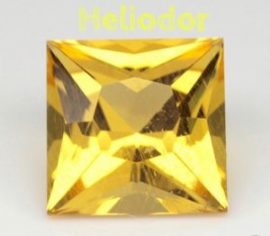
Heliodor and his Brothers.. Bixbite, Morganite..
Heliodor: Golden Beryl, Brother of Aquamarine and Goshenite When in nature, the Beryl appears yellow it is called Heliodor, when instead it shows a enough green it is called Emerald.…
